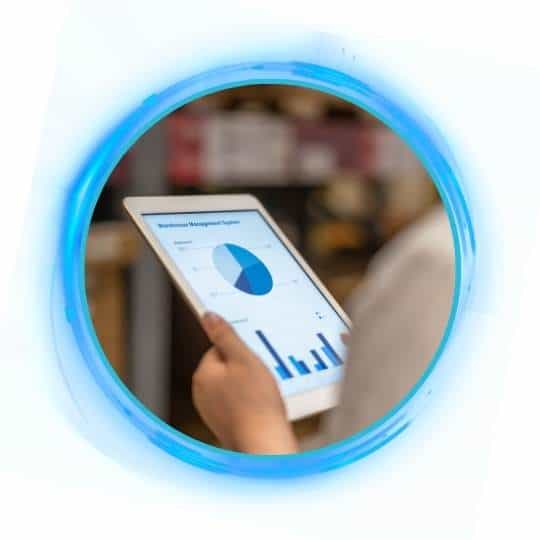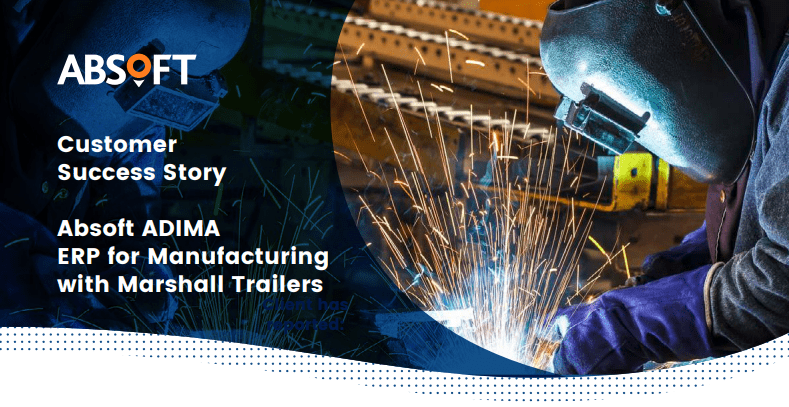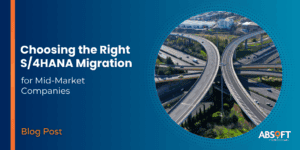As a manufacturer, selecting a new Enterprise Resource Planning (ERP) system is a formidable task. It has a direct effect on the efficiency and productivity of your whole company from production to financial reporting and if you don’t consider some crucial points when choosing the ERP, there can be detrimental consequences. Hence, preparation and knowledge are key to successfully asses which ERP system is right for you and will cater to your needs for as long as possible in the most optimal fashion possible.Â
In this blog post, the second of a three-part series, we’ll explore these crucial factors to consider, so you can make an informed decision when choosing your new ERP system.
Missed Part 1 where we broke down the “7 main risks of using an outdated IT system”? Read in now!
7 Things To Consider When Choosing ERP System for Manufacturing
1. Scalability
If you don’t want to go through the tumultuous process of moving ERP again, it’s important to find one that can grow with you.
From a production standpoint, the ERP must be able to handle the potential of additional manufacturing sites, increased production, additional processes, and new products with potentially more complexity being added. From a company context, you will want to easily expand your workforce, handle larger amounts of data, and process more transactions without impeding performance.
Having to choose a new ERP every time you outgrow it can ultimately set you back months or years, as the whole process of migrating can have a huge impact on operations. Today, considering cloud products is the easiest way to ensure scalability and flexibility.
2. Functionality & Integration Capabilities
Streamlining your system by choosing an ERP that can handle and integrate your whole operation from sales to product delivery will not only improve efficiency but reduce menial admin work so your workforce can focus on adding value.
However, you will not find an ERP that can operate in complete isolation. It will need to seamlessly integrate with other systems and tools to serve your organization. Consider if the ERP can easily connect with your supply chain; suppliers, distributors, and logistics partners. Does the ERP have pre-built integrations or APIs that could connect to additional software tools such as shop floor coordination or inventory management? Keeping these in mind will reduce day to day stress of IT systems.
3. User-Friendly Interface
A user-friendly interface is essential for successful ERP adoption. Employees across various departments will interact with the system, so an intuitive interface enhances productivity and reduces training time. A poor user experience will result not only in reduced productivity, but also resistance and frustration from users.
Review how the ERP interface will look for different roles such as shop floor operators, managers, and accountants. In addition, consider if the system assists with the flow of work intrinsically, there is intuitive navigation, and if there is functionality for individual customization. A strong user-friendly value proposal is crucial to the rate of adoption and future productivity of your company.
4. Support, Maintenance & Security
It is prevalent in the manufacturing space for companies to be out of maintenance/support which is dangerous in terms of productivity, compliance, cost, and security (more about risks of out-of-maintenance system in Part 1). Choose a solution that receives regular updates and maintenance, so it remains functional and secure.
Maintenance support for your ERP is like regular check-ups for your health. It prevents major issues, keeps your system robust, secure, compliant and ensures it remains aligned with your business goals. And while maintenance support comes with a cost, it’s an investment in the long-term stability of your ERP. Prioritize an ERP that offers ongoing support to reap these benefits. Subscription-based solutions are the best option to ensure you never go out of maintenance/support as it is intrinsically built into the offering.
5. Industry-Specific Functionality
Not all ERPs are created equal. As a manufacturer, it is essential to choose an ERP that caters to your specific industry and individual needs. Manufacturers have unique supply chain requirements due to the processes that need to be handled, compliance requirements (ISO/FDA), quality controls, and operational intricacies. Discrete manufacturers should pay particular attention to tools that support BOM definition, production scheduling and an intelligent MRP. Process manufacturers need to look at batch management, recipe formulation, and quality control. Any industry-specific functionality will streamline your operation and improve efficiency.
6. Deployment Model (Cloud-Based vs. On-Premises)
The latest technology for deployment of your ERP is cloud-based. As has been alluded to already, it comes with many advantages over the traditional on-prem solution. In addition, factors that used to be considered cons in cloud-based models, are now changing into pros with further advances. Cloud-based ERPs offer scalability, accessibility, faster deployment and cost savings, while traditionally, on-premises systems provide more control over data security and customization. However, cloud products are now becoming more flexible and can offer you the same level of control on your system and even better security that is constantly being updated and maintained on subscription-based models of cloud products. Furthermore, selecting a pre-configured cloud ERP solution guarantees the most seamless implementation process, addressing the disruption concerns of manufacturers.
Overall, with the direction of the technology, it is a no-brainer to adopt a cloud system.
7. Cost
Cost is important in any investment. Considering ERPs, the total cost of ownership (TCO) needs to be evaluated. This should include the initial implementation costs, data migration, user training as well as ongoing maintenance, licensing fees, and any hidden costs. One factor in cost that is crucial to compare is pricing models – subscription-based vs. perpetual licenses. Traditional perpetual licenses have large upfront costs but for a long period whereas subscription-based spreads the cost over time. This ties in partially to the consideration between cloud and on-premise arguments and their respective advantages. This should all be weighed up and factored into the long-term expenses of your product.
In summary, selecting the right ERP involves a thorough evaluation of your manufacturing processes, growth trajectory, and integration needs. With the right ERP in place, your manufacturing company can streamline processes, improve efficiency, and stay competitive in today’s fast-paced industry. Remember that involving key stakeholders (IT, operations, finance) in the decision-making process is crucial and to thoroughly evaluate potential ERP vendors.
Stay tuned for Part 3 of our series, where we’ll delve into “Managing Change” to address the concerns and challenges associated with implementing new system and how to prepare yourself for smooth transition.












